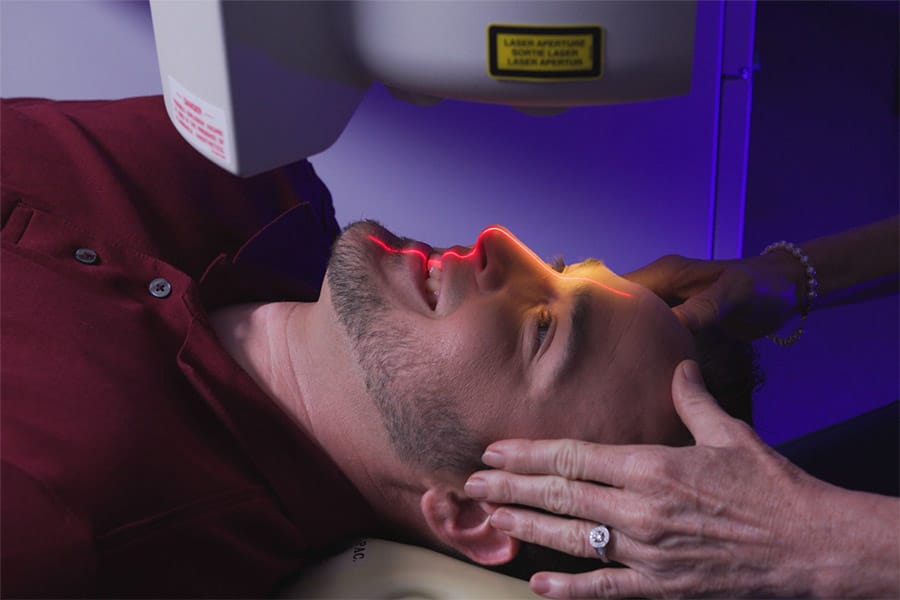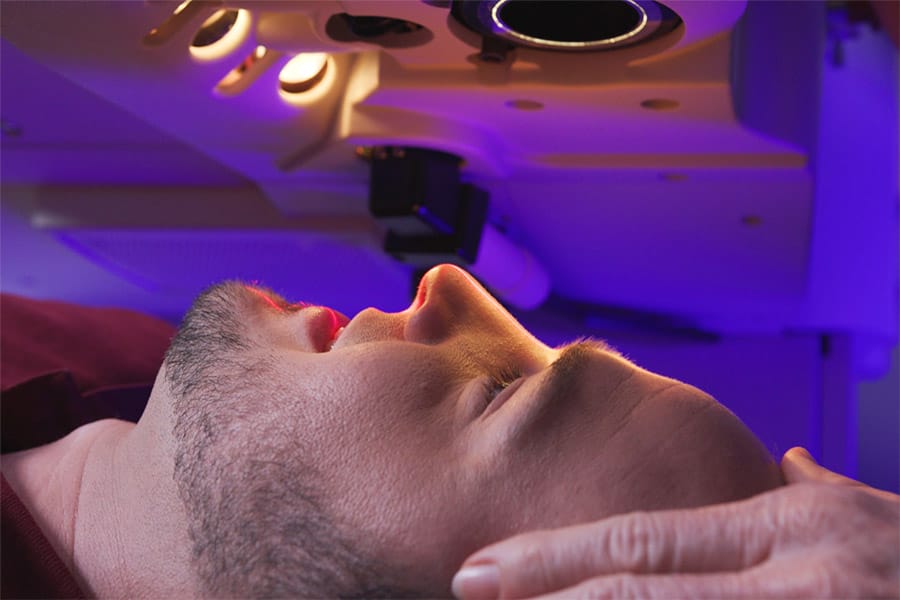LASIK Eye Surgery
LASIK is one of the most common elective procedures in the world. Yet, despite its popularity, many people don’t understand what LASIK eye surgery really is. Let’s explore exactly what LASIK is, what happens before, during and after the procedure, and how it can be life changing.
What is LASIK Eye Surgery?
LASIK is a form of refractive surgery. We call it refractive surgery because it fixes your refractive error (what people commonly call nearsightedness or farsightedness). To see clearly, your eye refracts (or bends) light so that you can see objects. When there is an issue with how your eye refracts (bends) light, it’s called a refractive error. The most common types of refractive errors are nearsightedness (myopia), farsightedness (hyperopia), and astigmatism.
LASIK eye surgery is also an elective procedure, which means that insurance will not cover the costs of the procedure and Wilmington Eye will not file a claim with your insurance carrier. Therefore, the cost of the procedure is solely your responsibility. To help make LASIK as affordable as possible and give every patient the chance to receive this life-changing procedure, we partner with CareCredit to offer financing with payments as low as $250 per month. You can also use funds in eligible FSA and HSA accounts to cover the cost of your procedure.
Is LASIK with Wilmington Eye Different?
YES! At Wilmington Eye, we offer the most advanced form of LASIK, called iLASIK. Other LASIK providers use an outdated form of LASIK that involves blades. Our advanced form of the procedure uses lasers, not blades. This advanced form of LASIK yields better results, is safer, and is much more predictable that older forms of the procedure. If you are considering other LASIK providers for your procedure, it’s important to find out if they also offer this advanced form of LASIK, or if they still offer an outdated version of the procedure.
Another exciting benefit of this advanced form of LASIK is the ability to completely customize your LASIK surgery to your vision. With iLASIK, we have the ability to create a 3-D topographical map of your eye. Then, during your procedure, the laser uses this 3-D map to correct your ocular imperfections. With this advanced procedure, patients not only experience a quantitative improvement in their vision (going from 45/45 to 20/20), they experience a qualitative improvement as well. Colors and images are sharper than they’ve ever been.
Is LASIK Eye Surgery for Everyone?
Many believe that wearing glasses or contact lenses means a person is by default a candidate for LASIK. However, LASIK is NOT suitable for everyone who wears glasses or contacts. To truly determine a person’s eligibility for LASIK, we conduct an extensive and comprehensive evaluation that ensures only those who will benefit from the procedure and receive optimal results have LASIK eye surgery.
As a rule of thumb, we evaluate the following 4 criteria:
Age
To be eligible for LASIK, the first thing we consider is a person’s age. From the time we are born, our bodies develop and change, and our eyes are no exception. Just like the rest of your body, your eyes mature with age, resulting in new prescriptions whenever you experience one of these growth points. Typically, most adults will achieve a stable prescription around age 21. For this reason, only those 21 and older (or those who are 18-21 and who have had a stable prescription for an entire year) are eligible for LASIK.
We also have an upward cap on the age limit for LASIK. Patients who are 35 or older are generally not qualified for LASIK. If you are 35 years or older, we strongly suggest alternative procedures like ICL or Refractive Lens Exchange.
Refractive Error
When your eyes have a problem refracting (or bending) light, the result is what’s called a refractive error. LASIK eye surgery fixes the way your eye refracts (or bends) light. And while there are multiple different types of refractive errors, LASIK can only correct a few types of refractive errors.
Farsightedness: If you have trouble seeing up close, you may be a candidate for LASIK.
Nearsightedness: If you have trouble seeing far away, you may be a candidate for LASIK. Those who are severely nearsighted are typically not qualified for LASIK
Astigmatism: If you have trouble seeing objects clearly.
Not sure what type of refractive error you have? Schedule a comprehensive LASIK consultation and we’ll determine what type of refractive error you have and if it qualifies you for LASIK.
NOTE: If you have been diagnosed with presbyopia, you generally ARE NOT qualified for LASIK.
Corneal Health
LASIK eye surgery changes the shape of your cornea. With lasers, we remove and reform the tissue that makes up your cornea. Because we are altering the shape of your cornea, corneal health is very important. During a LASIK consultation, our surgeons will evaluate your cornea to determine how healthy it is and if LASIK will yield optimal results.
Dry Eye
While rare, dry eye has been known to occur post-operatively in LASIK patients. Because of this, our surgeons will determine if you have a higher propensity for developing dry eye. Those who currently suffer from dry eye symptoms will likely not be candidates for LASIK.
Determining if You Qualify for LASIK
The only way to determine true LASIK candidacy is to come in for a complete, comprehensive eye exam with our LASIK team. Our LASIK surgeons use state-of-the-art diagnostic tools to evaluate all aspects of your vision and determine if LASIK eye surgery is best for you.
What Happens if I Don’t Qualify for LASIK?
Occasionally, a patient’s anatomical measurements are outside of the FDA requirements for the LASIK procedure, or LASIK is simply deemed unsuitable for a patient. Not being qualified for LASIK does not mean that a person’s chances of living glasses or contacts free are gone. As the leader in vision correction, we offer some of the most advanced forms of vision correction that suit a broad range of patients. We have surgeons who are experts in ICL and Refractive Lens Exchange, some of the most popular alternatives to LASIK eye surgery.
PRK (Photorefractive Keratectomy)
Like LASIK, PRK greatly improves your vision by reshaping your cornea using a laser. However, instead of creating a flap to expose the cornea, the entire protective (epithelial) layer is removed. Learn more about PRK.
ICL (Implantable Collamer Lens)
Best suited for patients with moderate to severe nearsightedness, implantable Collamer lenses permanently correct your vision. A small opening is created in the eye and an artificial lens is inserted and tucked behind the iris. Learn more about ICL.
Refractive Lens Exchange
If you’re a candidate for refractive surgery but have been diagnosed with presbyopia, a common age-related vision disorder, a Refractive Lens Exchange may be the best vision procedure for you. Learn more about Refractive Lens Exchange.
What to Expect Before, During & After LASIK Eye Surgery
Dr. Kathleen Leone, one of our four board-certified LASIK surgeons, operates the LASIK machine at the LASIK Center at Wilmington Eye.
Risks Associated with LASIK
LASIK has a very high satisfaction rate; most patients report seeing 20/20 or better after surgery. However, like any surgery, there are associated risks with LASIK. Some associated risks include:
- Infection
- Edema (swelling)
- Corneal Warpage Syndrome (commonly known as Ectasia)
- Loss of vision
- Corneal scarring
- Irregular astigmatism
- Dry Eye Syndrome (may require the frequent use of lubrication or other dry eye treatments)
- Need for reading glasses in the future
- Need for enhancements in the future
- Glare or halos
- Light sensitivity
While many of these side effects are temporary, there have been rare instances of reported long-term problems. Your LASIK surgeon will be able to explain any risks or side effects during your initial consultation.
Achieving Your Best Vision with LASIK
Wilmington Eye completely personalizes LASIK not only to improve your prescription (most patients experience 20/20 or better following LASIK), but also to enhance the overall quality of your vision. Our advanced technology allows us to give you a unique LASIK procedure that will give you the most clear and vibrant vision possible.



